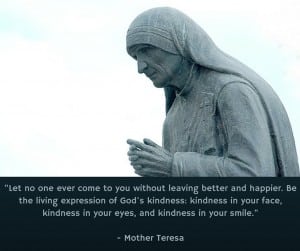
Bricks. We put them in place, seal them with our agreement, and reach for the next one. No one else puts them in our wall, for it is our wall alone. What wall, you ask? It’s the wall that we put in front of us to keep us from being successful.
“Not me!” you exclaim. “I only want to be successful, and I’m going for it!” Well, why haven’t you? Wait. What’s that I see? A brick of insecurity? “What if I get this promotion and people don’t treat me the same?” And that brick of fear… “I can’t step out towards my dream because I might fail.” What about that brick of self-loathing? “I’ve never done anything successfully, and this probably won’t work either.” The brick options are infinite, but they all serve a purpose: keeping us where we are right now – or even moving us backwards!
We all have bricks, and we all have choices to make with those bricks. When we build a wall in front of us, we are justified in staying “stuck.” After all, everyone around should be able to see that we CAN’T move forward – there’s a wall. It’s not my fault. It’s not my responsibility. It’s a wall, and walls are meant to hold people away.
Truly, others around you can see that you are hiding behind fears and insecurities. It shows on your face, and often, what you say reveals how much you have penned yourself in. Others would love to help you, but they can’t tear down your wall. Only you can do that. Because it’s your wall.
Isn’t it time to tear at least one of those bricks away? You can, you know. That brick of being afraid to fail is one of the most common and can be found in almost every person’s life. But it doesn’t have to hold you back. It doesn’t have to stay in your wall. You can tear it down, but you need the tools to do so. The Journey Training will give you the tools and teach you how to use them. Take a step toward your dreams. Bring the wall with you when you come to The Journey Training and learn how to tear it down!

It’s the beginning of the year, and most people are eyeing new goals – or the ones they never got around to finishing last year. For me it’s different this year. I’m addressing one I created a need for in 2015. I gained 30 pounds.
It’s been a tough year
This year in October, the cast of Season 8 of The Biggest Loser met at the National Institute of Health (NIH) in Bethesda, MD. We were excited to hug each other and talk over memories, but we were called there for a reason. During the trip, I learned some important things. We all have struggled with our weight after the show – some more than others – but everyone has struggled.
We went to NIH to get our metabolism tested again. You see, during my season on The Biggest Loser, the government tested our metabolisms before we began, in the middle of the process, at the final weigh-in, and 2 years after the show. They found that our metabolisms slowed despite retaining most of our muscle mass. They had speculated that if we kept the muscle, our metabolisms wouldn’t slow as much. They were wrong.
After the show, my resting metabolic rate (RMR) was 1500. Two years later it was 1650, and now it is 1800. When I began it was over 3000! They expected it to slow, but 6-years after I am at 79% of a normal man’s RMR, which puts me behind the 8-ball! Your RMR is the amount of calories you burn resting – doing nothing – and I’m at a 450 calorie disadvantage. They suspect it is because of our rapid weight loss paired with our rapid energy expenditure. I burned about 8000 calories per day while only eating about 15% as much. Our RMR’s haven’t bounced back like they thought it would. Our bodies have changed – despite packing on some additional muscle and our weight increasing.
All of that said, I gained 30 pounds this year, and I cannot become a victim to my circumstance! So what do I do now? I set a goal.
Success begins with a goal
When you set a goal, it should be attainable with real measuring points to hit along the way, whether the goal is financial, physical, spiritual, or relational.
First, you should come up with a precise goal statement. It should contain what you want in measurable form, a time frame in achieving it, and it must be realistic. To simply say “I want to lose weight” isn’t enough. We want to be specific.
Here are my goals for 2016
- I want to lose 30 pounds in 3 months. I have an amount to lose, a time frame to achieve it, and it is achievable.
- For financial, you might say I want to pay off $5,000 in credit card debt in 2016. It is measured in amount and time, and that could be done.
- Maybe I want to spend 15 minutes a day reading the bible in 2016. Yes! If I’d said 1 hour a day, I’d ask if it were realistic to spend over 6% of my waking hours reading. I’d say no – but less than 2%? Okay!
Write your goal statement and put it everywhere – on your refrigerator, mirror, desk, phone – everywhere!
Taking steps
Next you should set 3 goal action steps. Getting started begins with taking steps. Make them specific. Not “work out 1 hour every day.” 7-days a week is too high, setting you up to fail.
My action steps look like this:
1. I will eat lunch in the office four days a week.
2. I will work out three times a week in the gym, including an additional two hours of cardio.
3. I will weigh-in once per week and measure my achievements. Those three steps I can handle!
Each step, you may need to break down even further. If your first step is join a gym, you might break that down to
1. Visit three gyms this week
2. Choose one and sign up
3. Set up an auto-draft payment.
So, create your specific and measurable goal statement for 2016, and create 3 attainable action steps to get you moving. Now you just have to start moving – step by step! And if you need help, reach out to me! I have an online coaching group that can help you set and achieve your 2016 goals! You can email me at danny@thedannycahill.com.

Christmas! The most wonderful time of the year! A time filled with breaks from school, parties, shopping, pictures with Santa Claus, decorating the tree, hanging the stockings, family get-togethers, huge meals, cookies, and opening gifts. As children, we dream constantly about all the gifts we want and hope to get. As adults, we strive for finding the perfect gifts for everyone on our lists and the anticipation of watching the happy reactions of our loved ones and friends as the gifts are opened. What a wonderful time indeed!
The True Gift
The wonder of this holiday season and the gifts we give and receive can be so overwhelming that we often lose sight of the real reason for the season. God gave us the true gift of Christmas when He placed His love for all of us in the form of a baby named Jesus. “And when they came into the house, they saw the young Child with Mary His mother, and fell down and worshipped Him. And when they had opened their treasures, they presented gifts to Him: gold, frankincense, and myrrh.” (Matthew 2:11)
Our Gift to God
God came down to earth as a baby to ultimately show us how to love one another and to be in communion with Him. So what can we give God in return? I don’t think He’s looking for more gold, frankincense, or myrrh. It’s actually much simpler than that. We can give gifts back to God everyday by the way we live! When we choose to treat each other with kindness, mercy, grace, compassion, and love, God receives an incredible gift. That is what our Father would want more than anything and He gives us a way to do that in His word. It costs us nothing but our time and action. “Therefore encourage one another and build one another up.” (1 Thessalonians 5:11)
Giving Gifts
In The Journey Training, we teach a simple tool for following God’s word. We call it “Giving Gifts”. Gifts are all positive words used to affirm the best things about another person. All you have to do is go to the person you want to give the gifts to, look them in the eyes, and say “The gifts I see in you are…” If I were doing this with my beautiful wife, Lisa, it might sound something like this: “Lisa, the gifts I see in you are unconditional love, patience, courage, a sweet, sweet spirit, a great mom, and captivating beauty.” That’s really all there is to it! You can do this with anyone at any time. You will make the other person feel better about themselves and you will feel better about yourself. It can completely change the dynamics of the relationships in your life and even change you!
Merry Christmas!

I encourage you to try using this tool with your family and friends throughout this holiday season. You really have nothing to lose by trying, but you have everything to gain. The person receiving your gifts might just cherish your words more than any gift you could buy. Life is short and it is precious! How we live is our gift to God.
From the entire Journey Training team, we wish you a very
MERRY CHRISTMAS!

“The only limits I have are the ones I place on myself.” Danny Cahill wrote those words in his song, “Reach for it”. Those who know me may be thinking, “Alison & limits? Those two words don’t go together.” And they may be right in many ways.
I had a prenatal stroke, which would limit most people. But now I am doing side planks and star pushups, I’m the most mobile non-driver you’ll ever meet, and I can get to other states and back in a day’s time. I do have limits though.
The weight I still need to lose comes from limits. The feeling of “stuck” I have felt at various times in the last two years has been partially out of my control, but not all of it. Some of it has come from me limiting my own choices.
Who do you honor by committing?
I have had the opportunity in the last several months to look at my commitments, as well as my attitudes toward them. When it comes to honoring commitments, I historically honor commitments to everyone else, and only then do I MAYBE honor the commitments to myself. I’ll help someone with their personal or professional pursuits, and in the process I leave my own hanging – usually by talking on the phone with them when I had originally committed to exercise.
Competing Commitments
Danny has been working with us in his Simply Lose It coaching group on identifying, and then challenging our competing commitments. When we have something we really want (such as losing weight, getting out of debt, growing spiritually, etc.), but other hidden agendas consistently come against it through actions we are doing or not doing, the trend is a competition to our commitment. What we really want gets trumped by our competing commitment. Here’s an example of what it might look like:
I’m committed to losing x pounds in 6 months.
Things I’m doing that keep me from losing the weight:
I justify cheating based on social needs or how well I’m doing, I eat out too much, I drink sweet tea, and I allow one cheat to turn into 2 or 3
Things I’m not doing that keep me from losing the weight:
I am not getting workouts in, I am not eating the meal plan, and I am not staying consistent
Why do I or don’t I take the above actions?
Time management, excuses, losing my resolve, impatience
My competing commitments are:
- I am more committed to excuses and stress management than losing weight.
- I am more committed to eating out and cheating than eating the meal plan and losing weight
- I am more committed to drinking sweet tea than losing weight
- I am more committed to sporadically dodging workouts for various reasons than working out to lose weight
What are you most committed to achieving? What other commitments are competing with that commitment? To achieve what you most want, you have to move it above all of those other commitments, and act on it accordingly. Saying you are MOST COMMITED TO something doesn’t make it happen. If your results are that your competing commitment are winning, then you are truly most committed to your competing commitments. So how do we challenge these competing commitments?
Challenge It!
With all of these Do’s, I can write an “I don’t”, such as I do cheat too much –I don’t stay consistent enough to meet my goal.
After identifying my competing commitments, I need to take action to challenge them. I am shortening my commitment into smaller commitment times, making it easier to chalk up a win.
Struggling with too many cheats in a week, I am shortening my goal time to 3 and a half days from a week. Since I want to challenge credit card debt, I’m committing to not using credit cards for at least a month. Finding something you CAN DO to resist the competition arms yourself for the battle!
Competing with God
As I’ve marinated on this idea of competing commitments, I’ve also seen how it translates in my life spiritually. In the Bible, Jesus says in John 10:10, “The thief comes to steal, kill and destroy – I have come that you may have life and have it abundantly.” Satan has been competing with God from the beginning. Think about the Tree of Knowledge of Good and Evil. I read a meme this week that said, “Satan tries to limit your praying because he knows your praying will limit him.” The Name of Jesus will always challenge Satan. Nothing formed against us shall stand. Competing commitments have come, are coming, and will come. So let’s challenge them accordingly to overcome them and, in turn, get what we truly want!
Danny’s song “Reach for it” also says, “Just when I think my limit is found, I will go searching for more fertile ground.” Where will you search for the fertile ground? The Journey Training offered me fertile ground in my class, and a continual fertile ground each month! Participants have the opportunity to evaluate their commitments and break through their limits. Are you ready to find your fertile ground? The first thing you can do to challenge your competing commitments is to sign up for the very next Threshold class today! It has helped me, and I promise it can help you!
For a free copy of Danny’s song “Reach for it”, email him and ask for it at Danny@TheDannyCahill.com and he’ll send you an MP3!

Lucky Charms. That ubiquitous box of marshmallow goodness that kids love and parents secretly want to eat themselves. A few years back they came up with a jingle, when jingles were still cool, that named out all the brightly colored marshmallow shapes within.
“Hearts, stars and horseshoes, clovers and blue moons, pots of gold and rainbows, and me red balloon!”
Maybe you didn’t remember the whole thing, but I did. I found a little nugget of God’s truth hiding behind the cute marketing campaign.
Searching for truths
Hearts- the heart is a symbol for love, of course and God is love. The heart is first because first and foremost God loves us and we must put Him first in our lives. The rest follows as it should when we do.
Stars- stars represent the goals and plans we have for our future. As the saying goes, shoot for the stars.
Horseshoes- remind us to focus on the goal, to score a ringer.
Clovers- to look for that which is hard to find. A four leaf clover is present in about a 1 in 10,000 ratio. Difficult to find, not impossible. If it were easy, it wouldn’t be worth it.
Blue moons- gratitude. Things may only happen once in a blue moon, so we must savor each and every moment and thank God for all the blessings in our lives
Pots of gold- abundance thinking rather than scarcity.
Rainbows- optimism. Seeing the sun after the storm.
Red balloon- rising above that which seeks to drag us down. Our world is full of things to keep us from joy, just watch the news!
Christina Loveless is a graduate of The Journey Training. Her insight of truths within simple things that are right in front of her are an amazing example of seeing more than is visible. In The Journey Training, trainees consistently become aware of truths that were once hidden – in the world, in their lives, and in others’ situations. Seeing things from difference perspectives is one of the many tools that you will take home from your Journey Training experience.

Things in life are often a matter of perspective. We see this in mentality, actions, beliefs, and just about everything else! We read the bible and, if we take a scripture by itself, might get a perspective that was never intended – or maybe it was!
I always thought I needed to sow to reap. I mean, that’s what it says in the bible, right? What you get is inherently related to what you give, right? Well, if that’s the case, grace would have nothing to do with it.
I don’t always get what I deserve
At first, you might think of not getting what you deserve as a negative thing. I mean, you worked so hard at something, and you’ve never even gotten a “thank you.” Why wouldn’t I get what I deserve! Well, sometimes my perspective is “thank God!”
If we always got what we deserve, we’d probably be in big trouble! How many speeding tickets would you have, even for going 1 mph over the posted speed limit? I mean, your license might be revoked! And what about your thoughts. If every time you judged someone, you in turn were literally judged, where would you be? I don’t know about you, but I’m glad I don’t always get what I deserve!
Investments don’t always have a direct return
I know people who view every relationship as an investment – something that they will someday get a return for. They tend to give with an expectation that you will give back and they will reap the benefits of their gift. To me, this is a sad perspective on giving.
If I choose to give only to those that I will receive from, I am limiting the influence that God gave me to have. Instead, let’s try something different. Let’s look at a different perspective of the sowing and reaping principle.
Johnny Appleseed’s way to give
The legend of Johnny Appleseed suggests a different view on giving. What if instead of giving to get, we decided to get to give? Do you think that outlook may be different? If everything you give is an investment to acquire a return from, you might be disappointed. But if everything you get makes a new way you can give, whether you see the return or not, you might find disappointment of not getting what you deserve a little differently.
When I was told of the legend of Johnny Appleseed, I heard of a man with a bag of apple seeds traveling the countryside and planting apple trees everywhere he went. My first thought was “Why would he plant a tree and leave it behind, never even tasting the apples of so many of the trees he planted?” Then I thought of it differently. He reaped his reward with every seed he planted. It was the satisfaction he received when he did what he felt he was called to do – plant his seeds, and in turn, allow others to taste the fruit of his labors.
Can you get to give and receive for only self-satisfaction?
When I and the other facilitators of The Journey Training give of ourselves, we don’t give to get. Many may believe that we have gotten paid salaries to facilitate the training we created. That is not the case. We have received something, and in turn we feel a calling to plant seeds that others will taste the fruits from. When a trainee walks out from the training room and back into their world, we know that there will be many people who will benefit from what they have learned, including themselves. That satisfaction – that we are making a difference one life at a time – is a fruit we don’t have to see to taste. And I am here to tell you that it tastes sweet!
What is The Journey Training?
The Journey Training is an experiential learning process that is packed with tools you can use for your life. We have found that the traditional seminar doesn’t often result in sustainable change for most people. At The Journey Training, we give usable tools to facilitate lasting change.
Most people go to seminars and receive great information, but leave with very little application. They have been given many new truths, but unfortunately often leave with questions like “how do I implement this in my life?”
With our experiential learning environment, people get both awareness and tools that they can return home and immediately begin to implement into their lives; tools that affect change. We believe for something to change, simple teaching is not the answer, but rather having the tools that lead to new ways of thinking is.
Enroll in The Journey Training today, and begin to see success in a different way.








